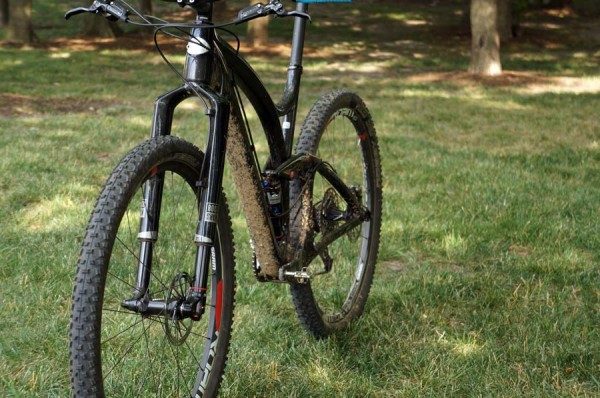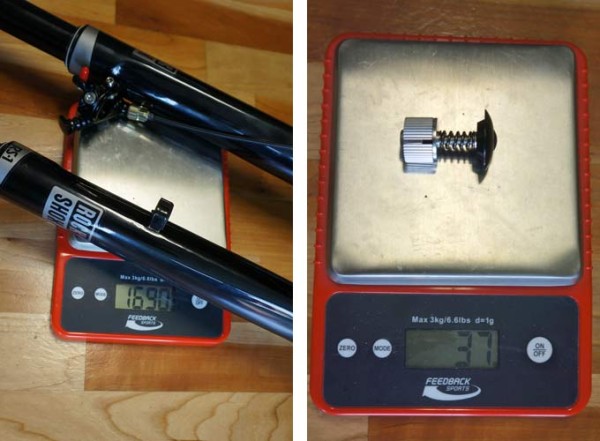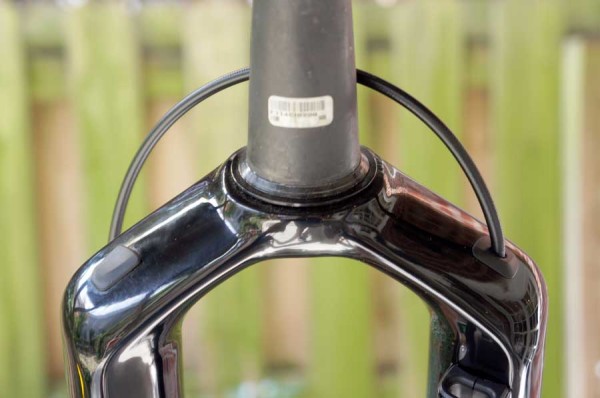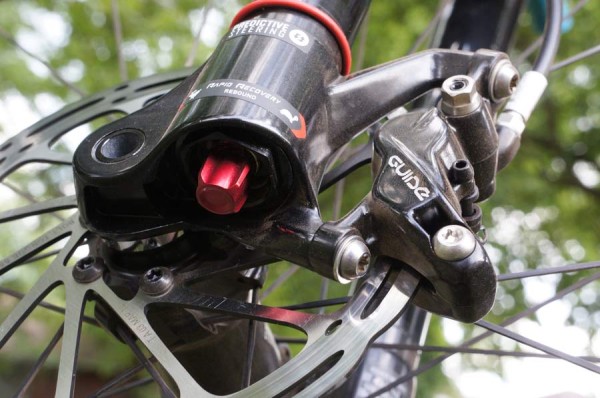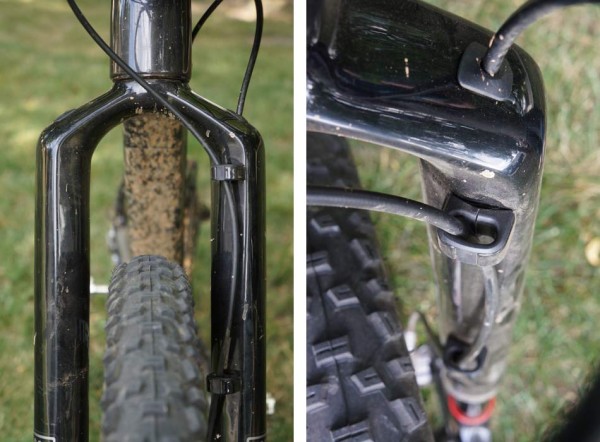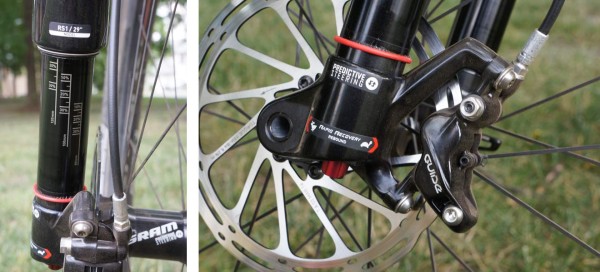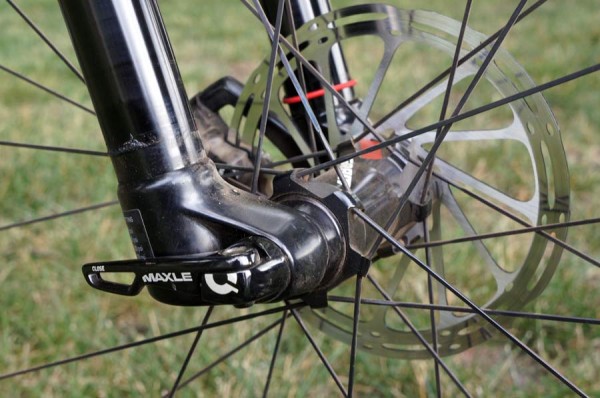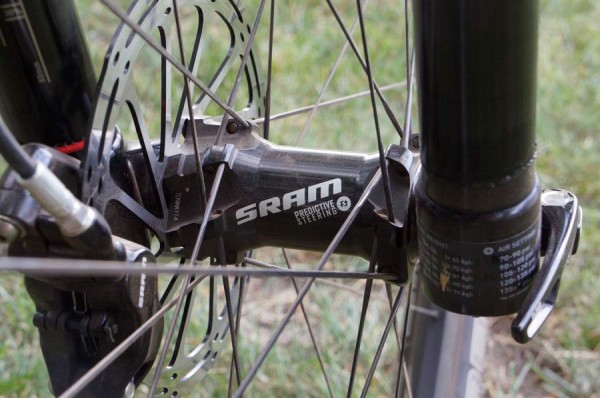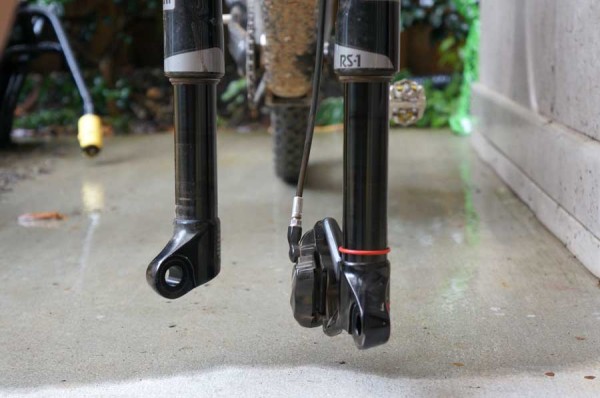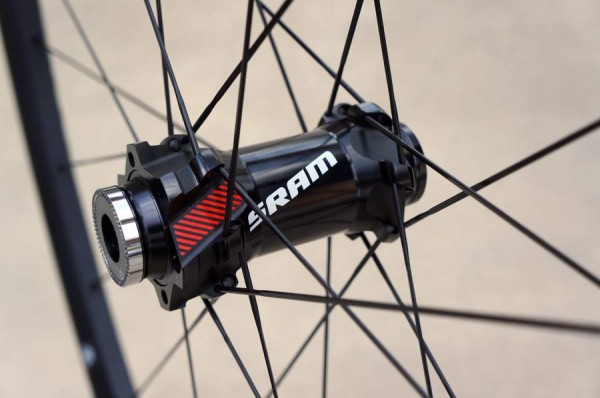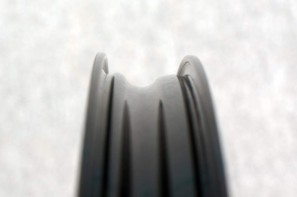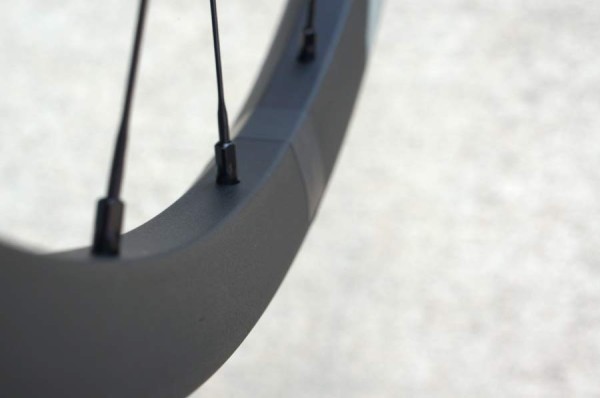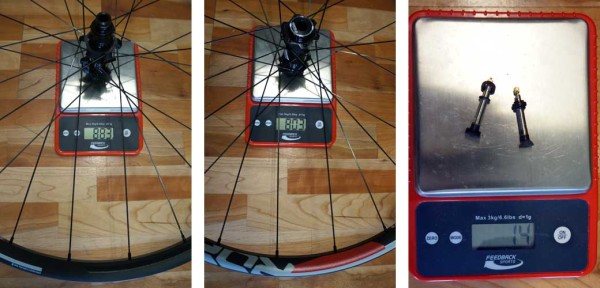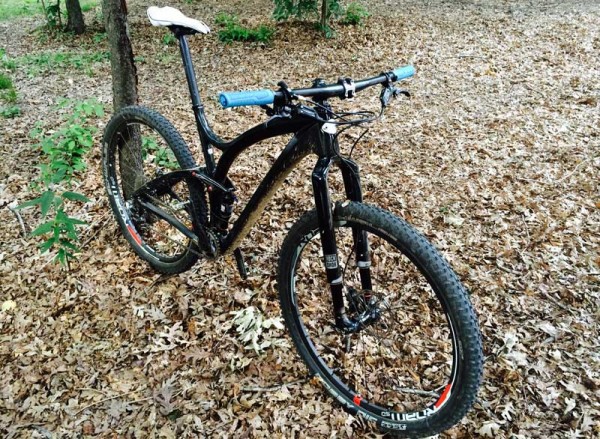If you want to turn the mountain bike suspension world upside down, just create a fork that flips convention on its head, uses proprietary parts and price it into the unobtanium range.
That’s exactly what Rockshox has done with the RS-1. Introduced in April, they just finally became available about a month ago and I’ve been hammering it nonstop ever since. It combines Rockshox’s well regarded current damper technology with a massively stiff design and reasonably light weight, and, fortunately, it’s performance seems justify its rocking of the boat.
To put these first impressions into perspective, it’s important to clarify the brand’s goals for the RS-1. Being a cross country race item, weight was among them to be sure, but it wasn’t the biggest target. That would be performance, and it was tackled in two ways: Suspension tune and handling. The latter is the most noticeable difference by far. Not only does it set the bar for XC forks to come, it sets it really, really high. It’s easy to make a fork massively stiff by increasing stanchion diameter and beefing it up. To do it in a lightweight, XC race ready frame that feels like something much bigger is incredibly impressive. They also wanted to give it an race specific tune. Cross country competitors are notorious for damping the life out of their suspension in a misguided effort to make it more efficient, so Rockshox used this opportunity to tune the compression damping in a way that didn’t flop about under sprints but could still soak up trail chatter to maintain traction. When the fork can stay in contact with the ground without robbing the rider’s energy, that’s the real definition of efficiency, and their new Accelerator Damper seems to do just that.
Ready to race?
TECH DETAILS & ACTUAL WEIGHTS
Out of the box, the RS-1 with uncut steerer came in at 1690g. The expansion plug top cap is 37g. I cut 18g worth of steerer tube off to fit my size large Niner JET 9 RDO frame, yielding a ready-to-install weight of 1,709g (3.77lb).
Starting at the top, the carbon upper is one piece from top of steerer all the way down through the body. Fortunately, it moves away from the alloy neck spacer found on the carbon SID forks.
The XLoc Sprint hydraulic lockout hose enters on the non-drive side, where the damper is. Technically, there are no external compression adjustments, but the remote has their Floodgate control, letting you set the lockout’s breakaway threshold. Technically, that allows you to run the fork with a firm platform all the time, having it break into normal travel only when you hit something big. That said, Rockshox firmed up the lockout considerably compared to the SID, where such hacks worked much better. It takes a good bit more force to blow through the RS-1’s lockout. For more practical compression tuning, you can use their Bottomless Tokens to change air volume, which keeps movement plush at the top but allows four different ramp rates farther into the travel.
The plug on the drive side hides a bolt used to unfasten the air chamber, allowing that leg to be removed. The Solo Air’s Schrader air valve is on the bottom of the drive side.
Rebound is on the non-drive side. Knob is sized well with large enough ridges to be turned easily with full finger gloves. Rebound damping range is wide, giving you plenty of control over its speed.
Tire clearance is rather good, plenty for anything an XC racer is likely to use. This is what it looks like set at 100mm travel. Brake hose is routed through two solid, tool-free loops. They’re big, but they’re one of the best hose management systems I’ve used.
Post mount brakes are sized for 160mm rotor minimum. Sag indicators for all three travel options printed on the stanchion. The RS-1 can be converted between 80, 100 and 120mm travel options.
The Maxle Ultimate makes for very easy axle removal. Wheel removal is easy, too, but putting it back in takes a little more effort (keep reading). One big caveat about the Maxle’s lever placement: It must NOT be facing upward where it can contact the carbon uppers during full compression. There’s even a warning sticker on the lever to make sure you know this. Why? Because if you bottom it out and the carbon uppers nail the lever, it could damage the carbon and ruin your fork.
The big question and single most controversial item about the RS-1 is the required Predictive Steering hub. Yes, it’s annoying to have to use new wheels or rebuild your current ones just to use a new fork, but there’s a good reason for it. Because the stanchions can twist and turn and compress independently of each other, the axle has extra stress in multiple directions. It not only needs to prevent rotation, but it needs to keep the stanchions sliding in unison.
A traditional axle wouldn’t be strong enough to prevent uneven movement, which would lead to potential hub bearing binding and friction, not to mention brake rotor rub. So, Rockshox kept the 15mm Maxle Ultimate, but created a solid 27mm secondary axle over it that slides all the way through the hub. Once clamped into the dropouts, it becomes a more solid system that lets the fork work as intended. And work it does.
SRAM ROAM 50 WHEELS
As part of the fork test, we received a set of SRAM Roam 50 wheels. The Roam 50 is their base level wheelset available with the Predictive Steering front hub. You can also get the hub separately, or use the DT Swiss option.
Claimed widths are 25mm external/21mm internal, but these measured out at almost 26mm external at the very top of the bead. I didn’t get a chance to measure internal width before we mounted them up (SRAM’s MTB tech guys visited our office for the install and first rides and we were itchin’ to hit the trail). They use a full UST design with ample tire bead channels and a nice center groove. I mounted some Schwalbe Nobby Nic tires I’d been using on other wheels with Orange Seal sealant. They seated and inflated on the first try with a compressor.
The rims have a very boxy shape with offset spoke placement. They’re built with alloy nipples, nylon lock rings and double butted steel spokes. There was little if any initial pinging during my first ride. The axles easily swap between all options. The rear hub is X0 level, but uses DT’s Star Ratchet system rather than a standard pawl-and-toothring engagement system. As such, it’s fairly quiet with very quick engagement.
Claimed weight for the 29er Roam 50 wheelset is 1610g in it’s lightest configuration. Our test set had the tubeless rim tape preinstalled with an XD Driver Body and came in at 1,686g. The included valve stems added 14g.
As a true weight weenie, I would have loved to get the Rise carbon wheels. But, in all honesty, the Roam 50 setup has surprised me. They’re reasonably light and very stiff. The width is just right for aggressive XC and trail riding. They’ve been solid performers so far.
RIDE REVIEW
The most immediate thing I noticed was how much quicker the steering seemed. Most recently, I had been running the SID World Cup (carbon crown and steerer) and another 32mm stanchioned XC fork. Compared to those, the improvement in steering precision and reaction time is immediately apparent. Now I get what they mean by Predictive Steering – it’s not that the equipment can predict what you’re doing, but that it allows the rider to better predict what it’s going to do. And that’s immensely important when you’re pushing your skills and your equipment to the limit to shave seconds off a race course. You need to trust that your gear will take you where you’re aiming, and the RS-1 and Roam wheels do. That alone is worth the slight weight penalty over the SID.

The second thing I noticed was how much stiffer it is fore/aft. Hit a section of roots or rocks and it just plows through. With traditional 32mm stanchion forks I’ve ridden in the same travel range, those same repetitive root hits would elicit a slight feeling of hesitation from the fork. They seemed to bog it down a bit, slowing forward motion as the legs bent backward. The RS-1 is simply unaffected by such things. It’s amazing to feel the difference, and it’s amazing how much faster it makes you feel through the gnarly, knotted, rutted chunk. Plus, it makes the whole front end of the bike feel more stable and connected.
The handling and the stiffness is the real story here, but the suspension is rather nice, too.
With the introduction of their closed bladder Charger Damper and Rapid Rebound, Rockshox made big improvements in their forks’ performance. The idea behind the combo is to keep the forks higher in the travel, where they’re smoother. It also keeps them ready for bigger hits and helps maintain traction. For the RS-1, they tweaked the tune to create the Accelerator Damper. Same concept, just with firmer compression damping and firmer lockout. Push on the handlebars in the showroom and it’s going to feel harder than a same-travel SID, Reba or Revelation.
On the trail, though, it opens up. It does an admirable job of erasing fine lines while resisting bobbing and brake dive. It’s taut, but it can still take a big hit. The Fast Black stanchion surface treatment is smooth and slick. Put it all together and you get a fork that lets you go faster in the corners, faster through the chunder and faster in the sprints.
The only complaint is the $1,865 asking price plus whatever wheel or hub costs you’ll incur to actually use it. It’ll be really interesting to see where the inverted design and technology go from here.
First impressions are fantastic. We’ll post a long term durability test when the time is right.
